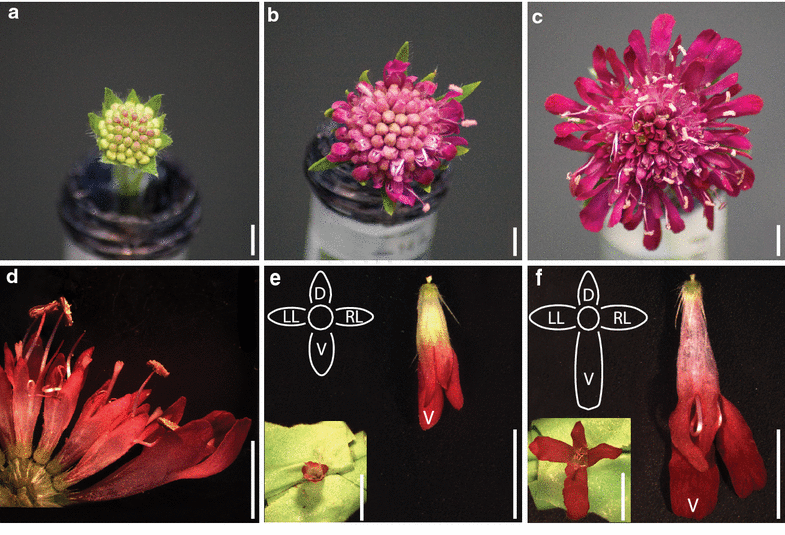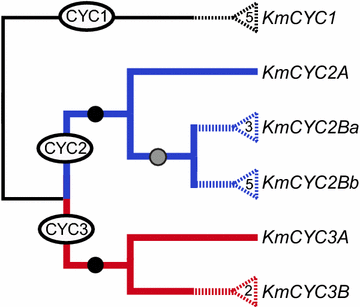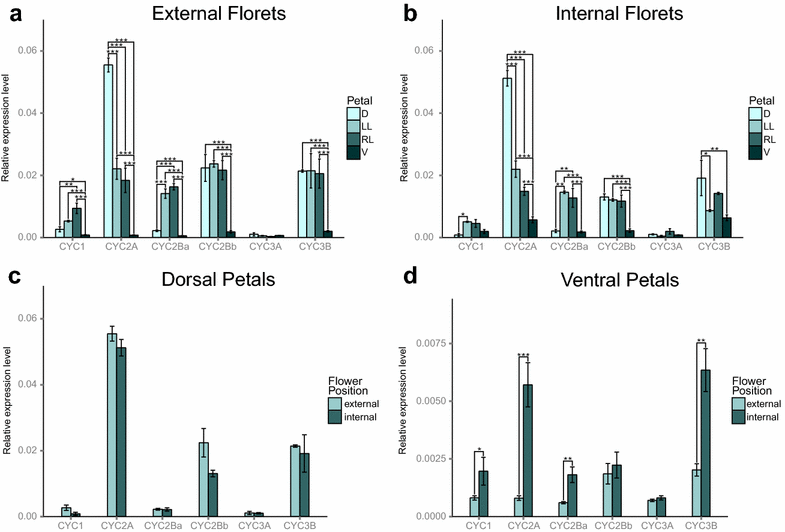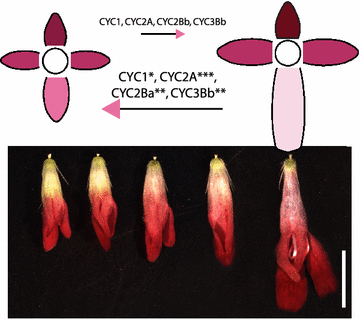Elaboration of bilateral symmetry across Knautia macedonica capitula related to changes in ventral petal expression of CYCLOIDEA-like genes
- PMID: 27042288
- PMCID: PMC4818532
- DOI: 10.1186/s13227-016-0045-7
Elaboration of bilateral symmetry across Knautia macedonica capitula related to changes in ventral petal expression of CYCLOIDEA-like genes
Abstract
Background: Shifts in floral form across angiosperms, particularly from radially symmetrical to bilaterally symmetrical flowers, are often associated with shifts in speciation rates and changes in pollination syndrome. Growing evidence across both rosids and asterids indicates that CYCLOIDEA (CYC)-like transcription factors from the TCP gene family play a role in establishing the dorsoventral pattern of flower symmetry, which affects the development of both the corolla and androecium. Previous studies of CYC-like genes, especially of the CYC2 clade, indicate that these genes are dorsally restricted in bilaterally symmetrical flowers. Also, gene duplication of CYC-like genes often correlates with shifts in floral form in both individual flowers and head-like inflorescences (capitula).
Results: Here, we compared the expression patterns of six CYC-like genes from dorsal, lateral, and ventral petals of internal and external florets across capitula of Knautia macedonica (Dipsacaceae). We demonstrate that multiple copies of CYC-like genes are differentially expressed among petal types and between internal and external florets. Across paralogs, there was a general trend toward a reduction in dorsal expression and an increase in ventral expression in internal florets compared to external florets. However, it was in the ventral petals where a statistically significant increase in expression correlates with a less zygomorphic flower. We also show for the first time lateral-specific expression of a CYC-like gene. Additionally, dorsoventral asymmetric expression of a CYC3 paralog indicates that this understudied gene clade is likely also involved in floral symmetry.
Conclusions: These data indicate that the elaboration of bilateral symmetry may be regulated by the dorsoventral gradient of expression, with statistically significant changes in ventral expression correlating with changes in dorsoventral morphological specialization.
Keywords: CYCLOIDEA; Capitula; Floral symmetry; Knautia; qPCR.
Figures





References
-
- Neal P, Dafni A, Giurfa M. Floral symmetry and its role in plant-pollinator systems: terminology, distribution, and hypotheses. Annu Rev Ecol Syst. 1998;29:345–373. doi: 10.1146/annurev.ecolsys.29.1.345. - DOI
LinkOut - more resources
Full Text Sources
Other Literature Sources

